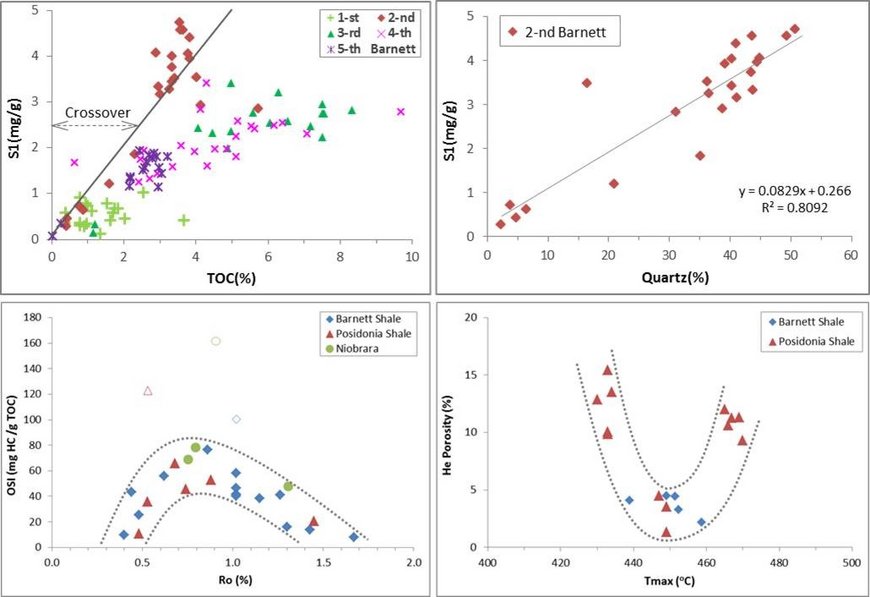Mechanisms of Hydrocarbon-Retention in Unconventional Reservoirs
Current fluid retention and expulsion models for petroleum source rocks are simplistic, combining a kinetic description of oil and gas generation with a sorption threshold and a basic permeability description of the source rock. It omits a range of chemical and physical details which may be critically important for predicting the amount and type of retained fluid and its producibility. These include 1) variations in the generation kinetics of different source facies, 2) variations in sorption behavior related to e.g. competitive sorption or differences in the physical and molecular structure of the kerogen, 3) heterogeneities of the porous medium on a range of spatial scales, and 4) phase behavior of fluids within the nanoscale capillaries of shales and 5) during fracking.
The formulate goals of this study combines four fundamental tasks:
- First and covering a range of spatial scales, we quantify the in‐place retained oil and gas as a function of organic matter richness, kerogen type, maturity, and mineralogy.
- Second, we attempt to model petroleum retention mechanisms by comparing retained petroleum composition to related reservoir petroleum composition.
- Third, we will develop models for petroleum generation, retention, and expulsion to predict sweet spots within the sedimentary package.
- Forth, we will evaluate how this established “geochemical” framework then translates into producibility.
Participants:
- Prof. B. Horsfield
- Dr. Nicolaj Mahlstedt
- Yuanjia Han
Funding:
- Noble Energy


